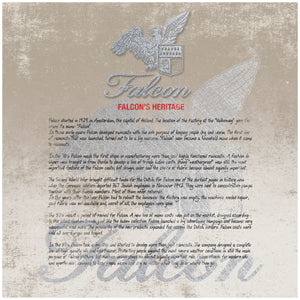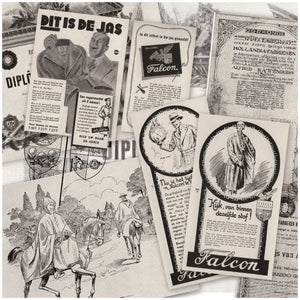History of Falcon

1929 - The Beginning
Falcon began in 1929 in Amsterdam, the capital of the Netherlands. The location of the factory on Valkenweg gave the brand its name: 'Falcon'.
In its early years, Falcon developed raincoats solely for the purpose of keeping people dry and warm. The first line of raincoats launched proved to be a resounding success. "Falcon" quickly became a household name for raincoats.
1930s - First Success
In the 1930s, Falcon took its first steps toward producing more than just functional raincoats. A Berlin fashion designer was hired to develop a line of trendy women's coats. Weatherproofing was still the most important characteristic of Falcon coats, but design, color, and fabric selection became almost equally important.


November 1942
World War II brought difficult times for the Dutch. For Falcon, one of the darkest chapters in its history was when German soldiers deported 367 Jewish employees in November 1942. They were sent to concentration camps along with their families. Most of them never returned. In the years after the war, Falcon had to rebuild the company. The factory was empty, the machines needed repair, good fabric was unavailable, and, worst of all, the employees were gone.
1950s - The Revival
The 1950s marked a period of revival for Falcon. A new line of men's jackets was launched, designed according to the latest fashion trends, just like the women's collection. Falcon launched a major advertising campaign and was once again very successful. The popularity of the new products spread far beyond the Dutch borders. Falcon jackets were sold throughout Europe and beyond.


80's - Ski and Sportswear Expansion
In the 1980s, Falcon took a major step and began developing more than just raincoats. The company designed a complete line of high-performance ski and sportswear. Protecting people from the harshest weather conditions remains the primary goal of Falcon clothing, but fashion design plays an almost equally important role. Falcon stands for modern ski and sportswear, designed to keep people warm and dry, whatever they do or wherever they go.


